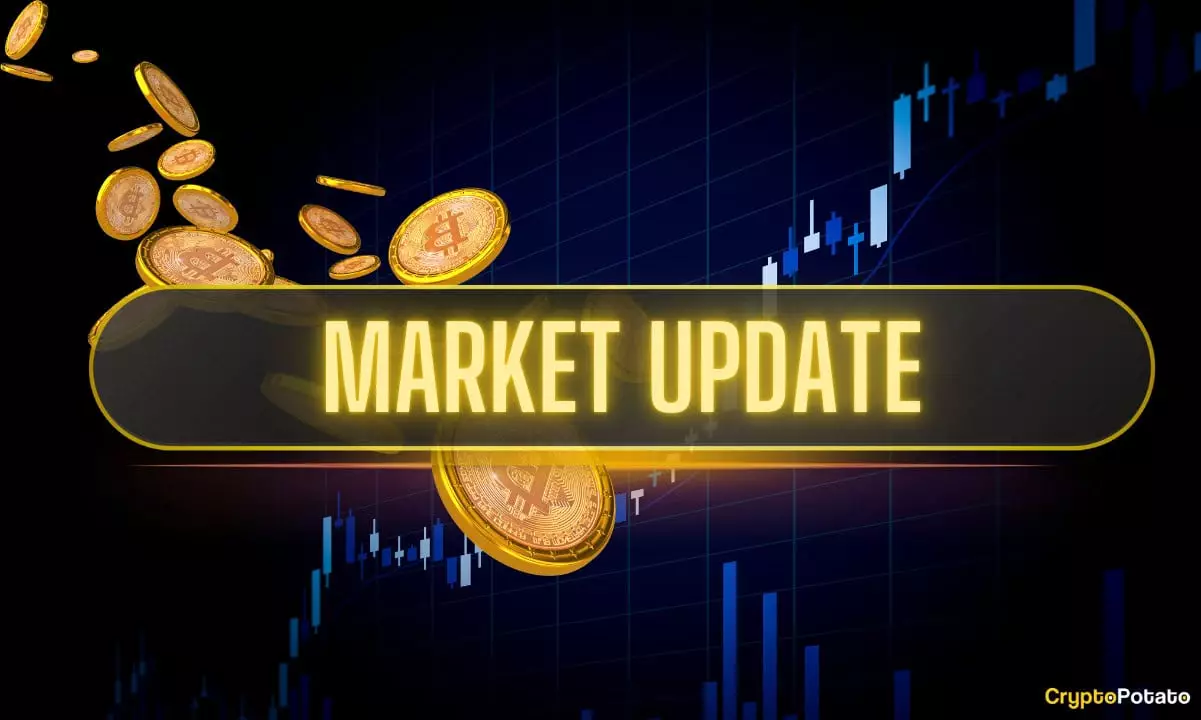Over the past week, Bitcoin attempted to shake off its volatility with a brief surge past the $100,000 mark—an event seemingly catalyzed by positive developments surrounding US-China trade negotiations. This significant upward movement reinforced the optimism among investors, suggesting that perhaps a new era of stability might be dawning. However, that hope was tempered as market dynamics shifted swiftly, demonstrating the precarious balance in the cryptocurrency space. Despite Bitcoin touching nearly $106,000 for the first time since January, it was met with an aggressive pullback, highlighting an essential reality: the cryptocurrency market is as much about psychological behavior as it is about tangible economic indicators.
The market’s response to external events—like trade deals—demonstrates Bitcoin’s role as both a speculative asset and as a digital safe haven. Investors interpreted the tariff announcements as a signal for economic recovery, temporarily inflating Bitcoin’s price. Yet, as history has shown, the resilience of cryptocurrencies often wavers in the face of skepticism, leaving traders grappling for certainty amid the chaos. This constant ebb and flow leads to a broader discussion of whether Bitcoin’s price capabilities can truly align with the strong sentiment expressed by its community.
Interest Rate Pressures and Influences on Bitcoin Valuation
With a cooling inflation outlook in the United States, market participants have begun speculating about potential interest rate cuts—a factor that could significantly influence Bitcoin’s journey. The anticipation of lower rates could spur additional investment appetite as the cost of opportunity changes, making risky assets like Bitcoin attractive once again. Yet, despite initial upward momentum post-announcement, Bitcoin displayed an unsettling firmness around the $104,000 mark, refusing to break past the psychological threshold.
This reluctance raises questions that echo throughout the market: Is Bitcoin losing its edge as an innovative investment option? As virtually every major cryptocurrency, from Ethereum to Dogecoin, has experienced a rally, Bitcoin’s performance seems lethargic in contrast. The dissonance reflects broader trends regarding what investors are currently interested in, manifesting a challenging scenario for Bitcoin as its established supremacy confronts vigorous competitors.
Retail Investor Dynamics: A Double-Edged Sword
Another layer to this complex narrative is the reemergence of retail investors, a factor that could forecast renewed excitement around Bitcoin. On-chain metrics indicate that smaller investors are cautiously returning, but this comeback comes with caveats. Retail enthusiasm often signals a market peak. The behavior of this demographic is notoriously volatile; they’re known for entering frenzied buying phases only for prices to tumble shortly thereafter.
While the influx of retail investors could inject momentum into Bitcoin’s price, there’s an element of danger as this influx might merely be a harbinger of an unsustainable rally. The cryptocurrency market, particularly Bitcoin, thrives on momentum—once that momentum shifts, it can create a cascade of selling pressure, exacerbated when speculative behavior is at play. It begs the question: can long-term holders sustain their positions until retail reinforcements can truly transform Bitcoin’s fortunes?
Whale Behavior vs. Retail Sentiment
Interestingly, a stark contrast exists between retail activity and the behaviors of Bitcoin whales. The significant accumulation of 83,000 BTC by these larger holders indicates confidence in the asset’s capabilities and a possible price target of $110,000. Their purchasing strategy suggests they recognize Bitcoin’s inherent value and are positioning themselves for the long haul, regardless of short-term price fluctuations.
This divergence presents a compelling dynamic in the cryptocurrency ecosystem. While retail investors might swing with market sentiments, the whales are often less susceptible to such pressures. Their willingness to accumulate amidst downward price corrections signals a confidence that could potentially floor the asset’s price in times of turmoil. Thus, the future trajectory of Bitcoin may hinge less on immediate trading patterns and more on what these substantial players intend to do with their holdings.
Altseason and Its Implications on Bitcoin’s Future
The ongoing discourse about an impending altseason—where altcoins significantly outperform Bitcoin—adds yet another layer of complexity. Analysts argue that if Bitcoin’s dominance wanes, which it appears to be doing as Ethereum and other altcoins gain ground, this could either deflate its price or catalyze a transformative shift within the market. Such moves emphasize the importance of recognizing the shifting landscape of cryptocurrencies, as Bitcoin’s once-untouchable dominance faces real challenges from a plethora of advantageous alternatives.
In a macroeconomic environment ripe with uncertainty, Bitcoin is at a crossroads. As the narrative unfolds, discerning participants will need to remain vigilant about the critical signals from both retail and whale activity. The interplay between traditional financial elements, investor sentiment fluctuations, and external influences will be pivotal in charting the path forward in this ever-evolving landscape.














